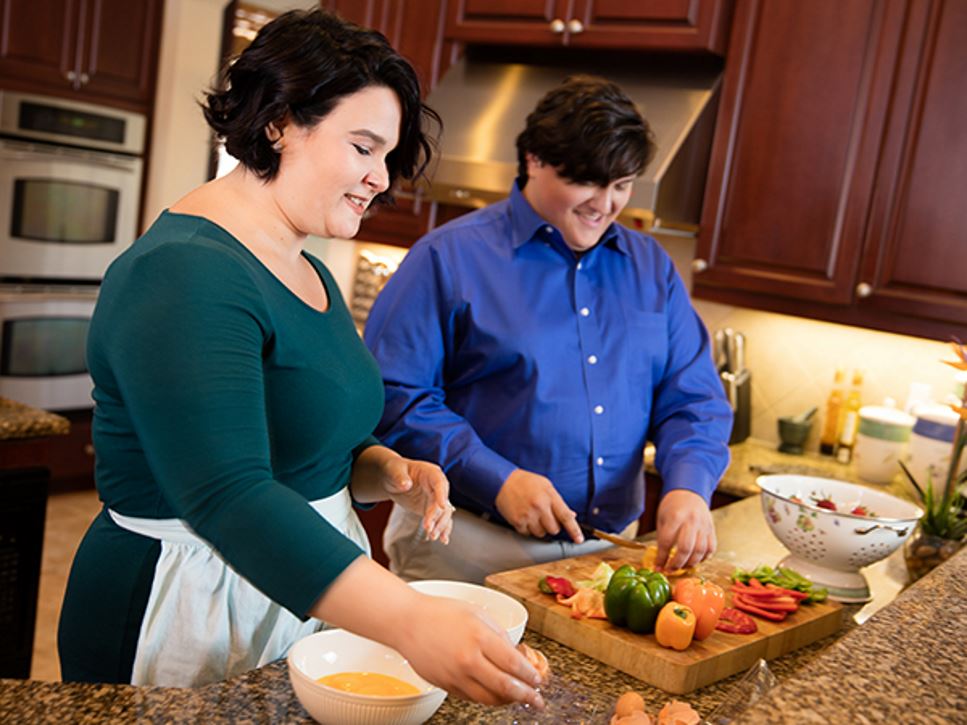Many recipes are written for a family and serve four to six people, making it tricky when cooking for just one or two. But just because you have a smaller household doesn't mean you should abandon the kitchen for takeout.
Make cooking nutritious and satisfying meals a priority. A helpful strategy when cooking for one is to become friends with your freezer. This makes it easier to cook full recipes, portion out servings and freeze them to reheat and eat later. You can save time, money and clean up by freezing soups, chili, pasta dishes, cooked whole grains and extra vegetables.
Here are more kitchen tips when cooking for one to two:
Grains
- Cook a batch of whole grains such as brown rice or barley and freeze in individual portions using a muffin pan. Once firm, the discs can be stored in a freezer-safe container or plastic bag.
- Tuck extra English muffins, buns or slices of bread into the freezer for another day. Wrap them tightly in plastic wrap to prevent freezer burn.
- Visit the bulk bins at your local grocery store. You can buy exactly what you need and it can help keep costs down. Many stores offer grains, nuts, seeds, dried beans and dried herbs and spices in bulk.
Veggies and Fruits
- Embrace frozen produce. Frozen fruits and vegetables without added sugar, salt or sauces are nutritious options, plus you can thaw what you need, when you need it. Frozen fruits and veggies are pre-cut, too, making them ready to add to smoothies, soups and stir-fries. And because they're frozen, there is no rush to use them before they go bad.
- Bulk bags of fruits and veggies are only a better deal if you eat them before they spoil. Buy only what you can reasonably eat before the produce perishes. Take extra grapes or cherries out of the bag and pare down that bunch of bananas to what you'll eat.
- The shelf life of produce varies. Enjoy options such as berries and spinach early in the week. Save heartier produce including cabbage, carrots and potatoes for meals later in the week.
Protein: Meat, Poultry, Eggs, Beans
- Unopened blocks of tofu can be frozen and then thawed in the refrigerator when you're ready to prepare them. This makes the texture spongier and better at soaking up sauces and flavors.
- Eggs can be hard-boiled ahead of time and eaten over the next few days for an easy breakfast, snack or quick addition to salad.
- Buy a whole package of meat or poultry and wrap individual portions in freezer-safe paper. Label each with the date and contents.
- Dried beans are super affordable, versatile and may be cooked and frozen for later use. Thaw in the refrigerator or microwave.
- A potato masher can easily transform a can of pinto beans into delicious, refried beans — add a pinch of cumin, garlic and chili powder and you're ready to eat!
References
Find a Nutrition Expert
Looking for credible nutrition information and recommendations? The Academy of Nutrition and Dietetics' network of credentialed food and nutrition practitioners are ready to help!

